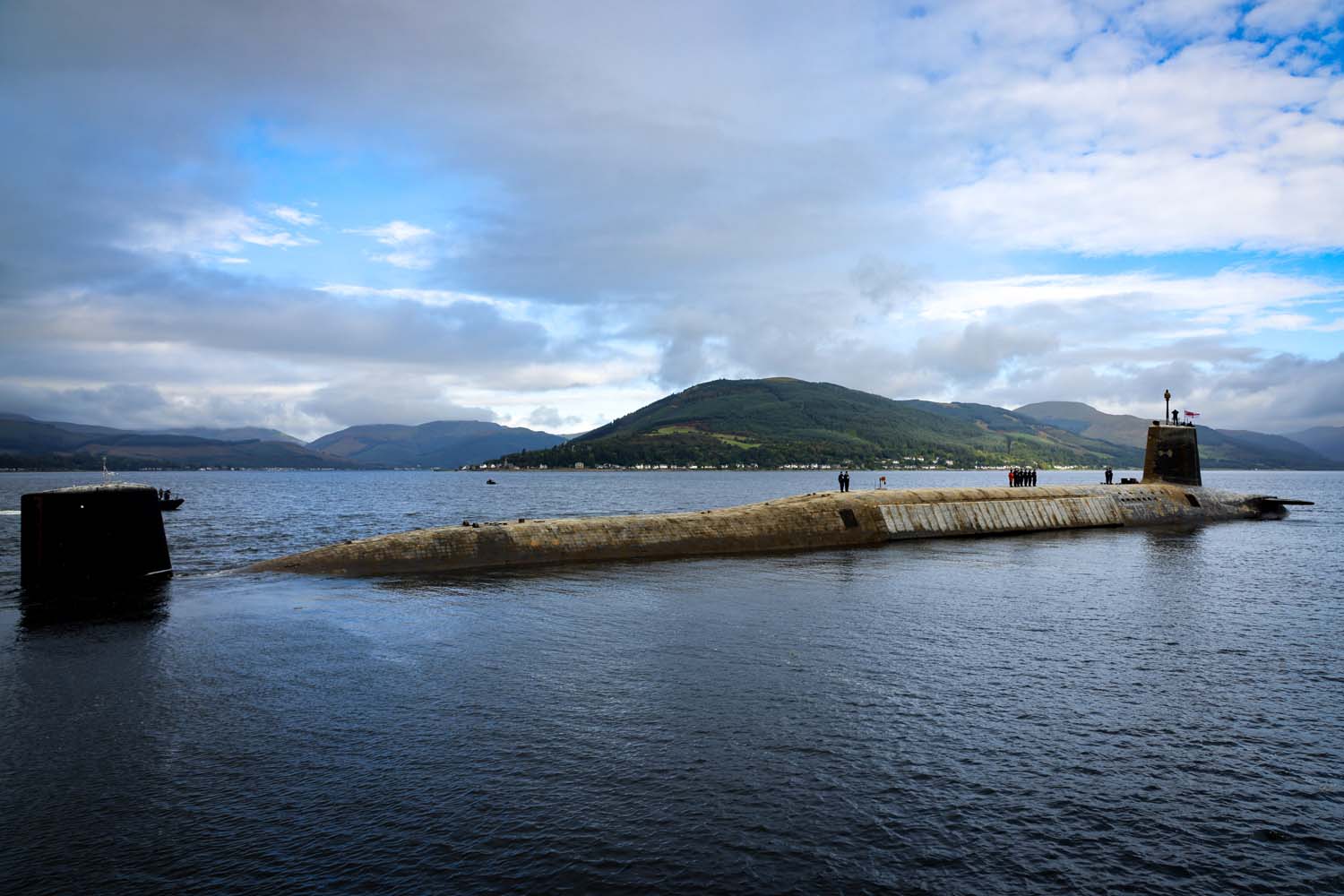In September a nuclear armed Vanguard-class submarine returned to Faslane from a 195-day patrol. This follows several previous 5-month patrols, substantially longer than the 3-month patrol length that used to be typical.
The submarine, which is thought to have been HMS Vigilant, was met by the Deputy Prime Minister Oliver Dowden on its return to the Clyde. He said he did not “underestimate the demands on our people and their families”, but did not directly refer to the length of the patrol.
In December 2022 a story published jointly by the Guardian and Ferret revealed that the Vanguard fleet had undertaken two 5-month patrols that year, from January to June and from May to November. NIS understands that HMS Vengeance carried out a 5-month patrol from February to July 2020, and the Navy Lookout website has calculated that the average patrol length over the last three years is 163 days, or 5 months and two weeks, and that the longest patrol on record was 207 days, carried out by HMS Victorious in 2021.
The extended length of patrols is a consequence of reliability problems within the fleet. The decision to build a fleet of four nuclear-armed submarines was based on a calculation that at any one time one of the submarines would be undergoing deep maintenance in the dry dock at Devonport, and patrol duties would rotate between the remaining three, with additional capacity within the fleet for short-term repairs and training as needed.
The extended deep maintenance and refuelling of HMS Vanguard overran by four years. This has delayed the planned maintenance of the second-oldest submarine, HMS Victorious, and generally increased the demands on the other submarines at a time when the entire fleet is now older than its originally planned service life of 25 years. During Vanguard’s deep maintenance, one of the other three submarines is known to have been out of service for over a year up to 2020. The length of patrols since then means that for much of that time the Navy has been unable to prepare a second submarine to relieve the current patrol within a shorter time-frame. Aside from the considerable strain on the crews, the length of these patrols will likely increase the maintenance required before each submarine is ready to return to sea, creating a vicious cycle.
The 2019 NIS report Trouble Ahead, drawing from the maintenance history of the Trafalgar-class fleet, suggested that ageing secondary systems within the submarine, such as steam generators and gear-boxes, could lead to problems with Vanguard availability. The reactor-life of each vessel is supposed to be sufficient to last until it leaves service, and after the difficulties of HMS Vanguard’s unplanned refuelling, the MOD decided against refuelling the other submarines.
Any delays to the programme to build the new nuclear-armed Dreadnought submarines will compound the issues with Vanguard submarine availability, as the fleet will be required to maintain patrols over an extended time period. Under these circumstances, changes to the patrol activities of submarines cannot be ruled out. Towards the end of the life of the Resolution class, which carried the UK’s Polaris missiles, some submarines on ‘patrol’ were reportedly obliged to remain stationary to minimise the strain on their systems.
Based on information currently in the public domain, it is unclear whether the latest 195-day patrol was originally planned to be that length or had to be extended. The substantial covering of green algae which was visible upon HMS Vigilant on return to Faslane may indicate time spent in warm or coastal waters.
HMS Vanguard is expected to return to the fleet in the coming months, following a ‘Demonstration and Shakedown Operation’ and test-firing of a Trident missile, while HMS Victorious has now arrived in Devonport for deep maintenance. However, from identities of submarines now known to have carried out long patrols, it is clear that the reliability issues have not been restricted to a single submarine. This means issues are highly likely to continue for as long as the Vanguard-class remain in service, well into the 2030s.

